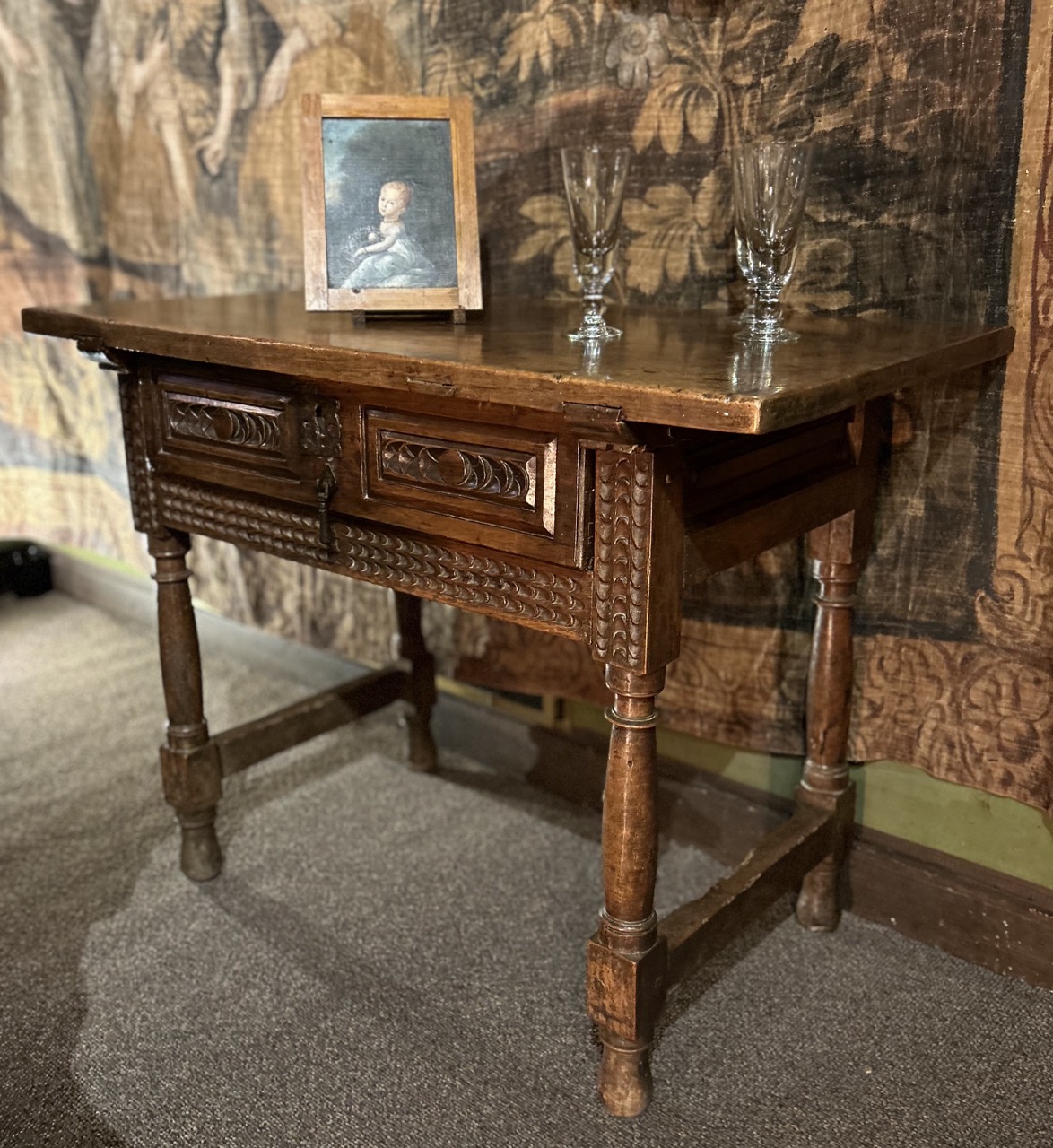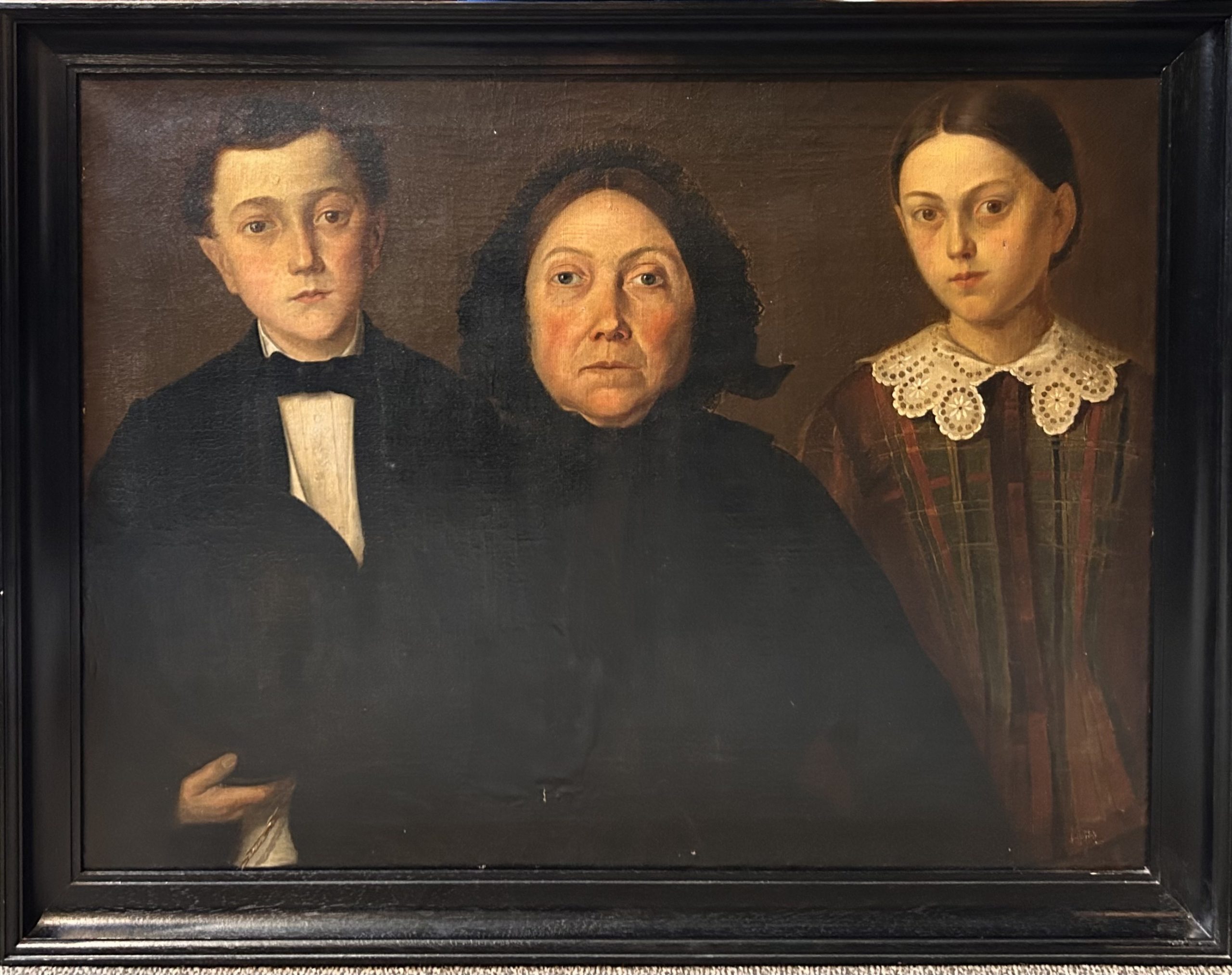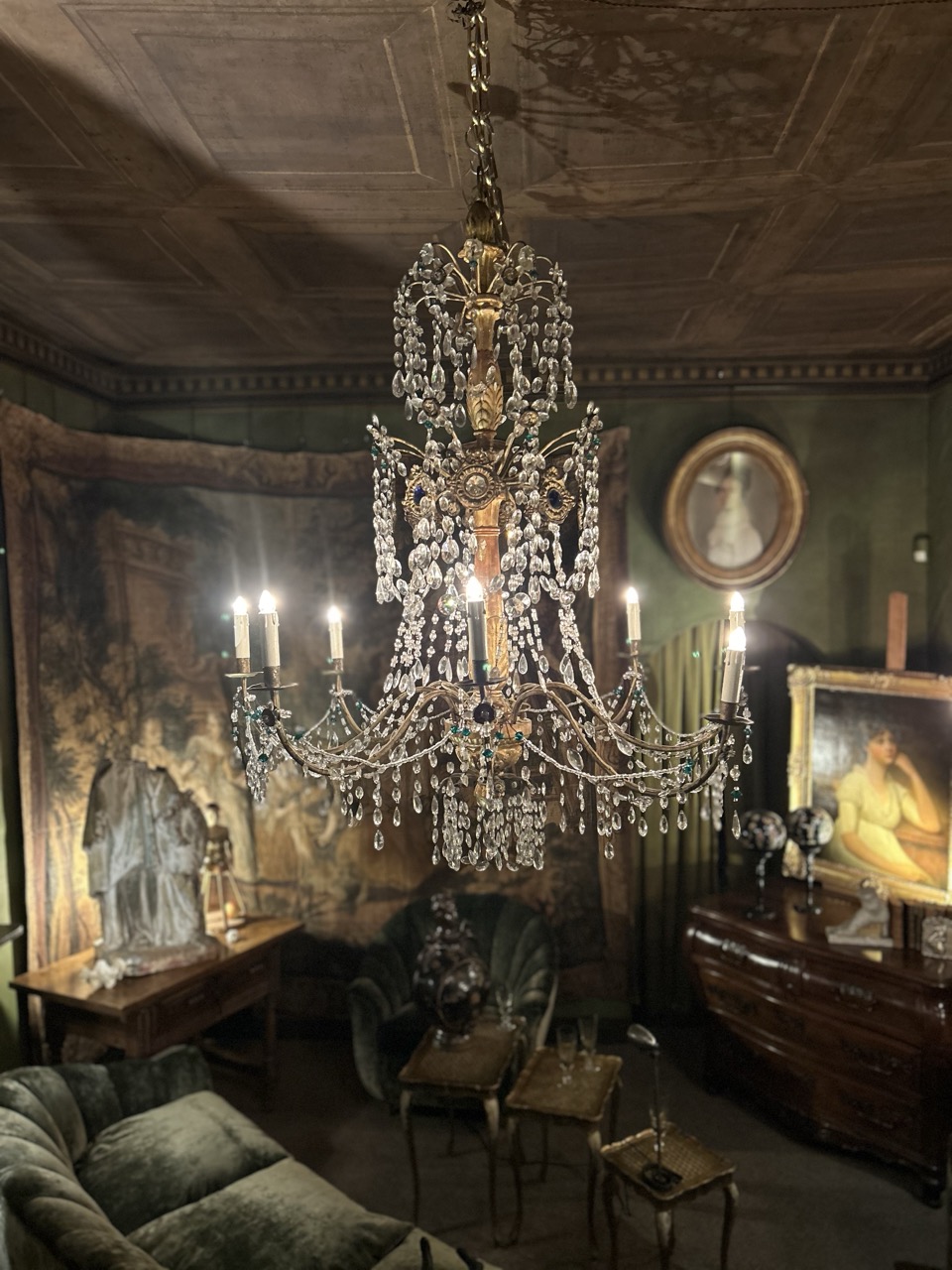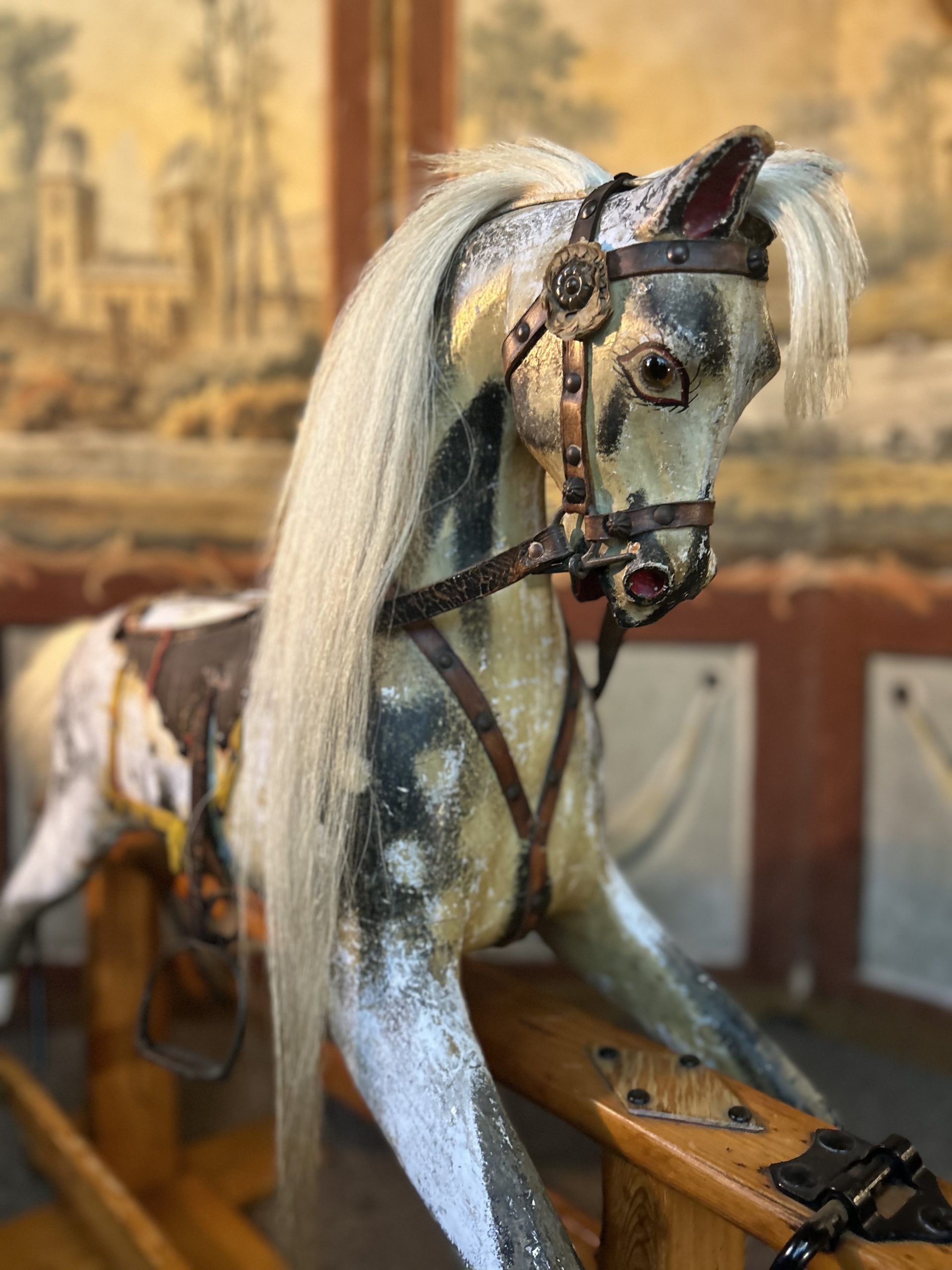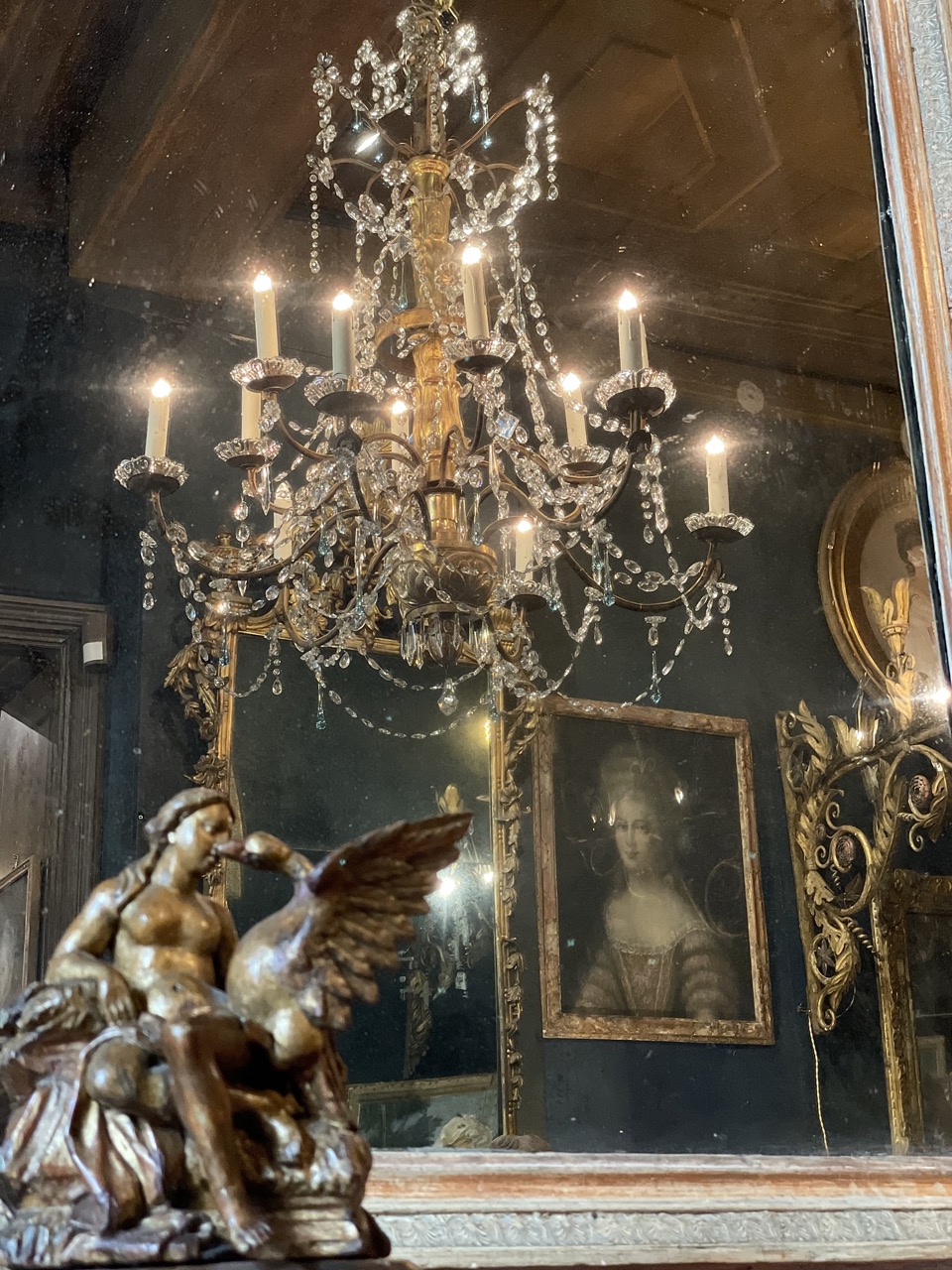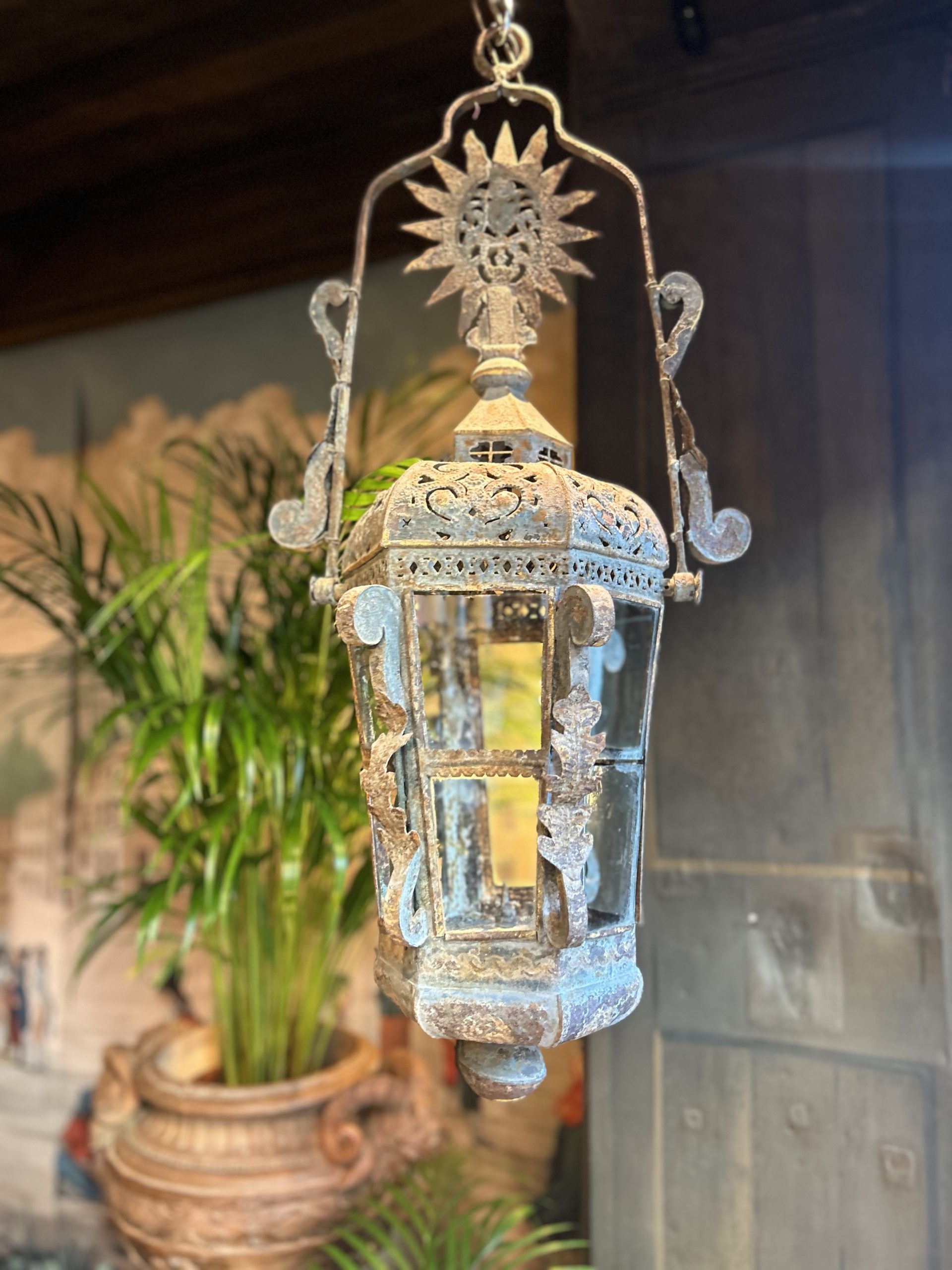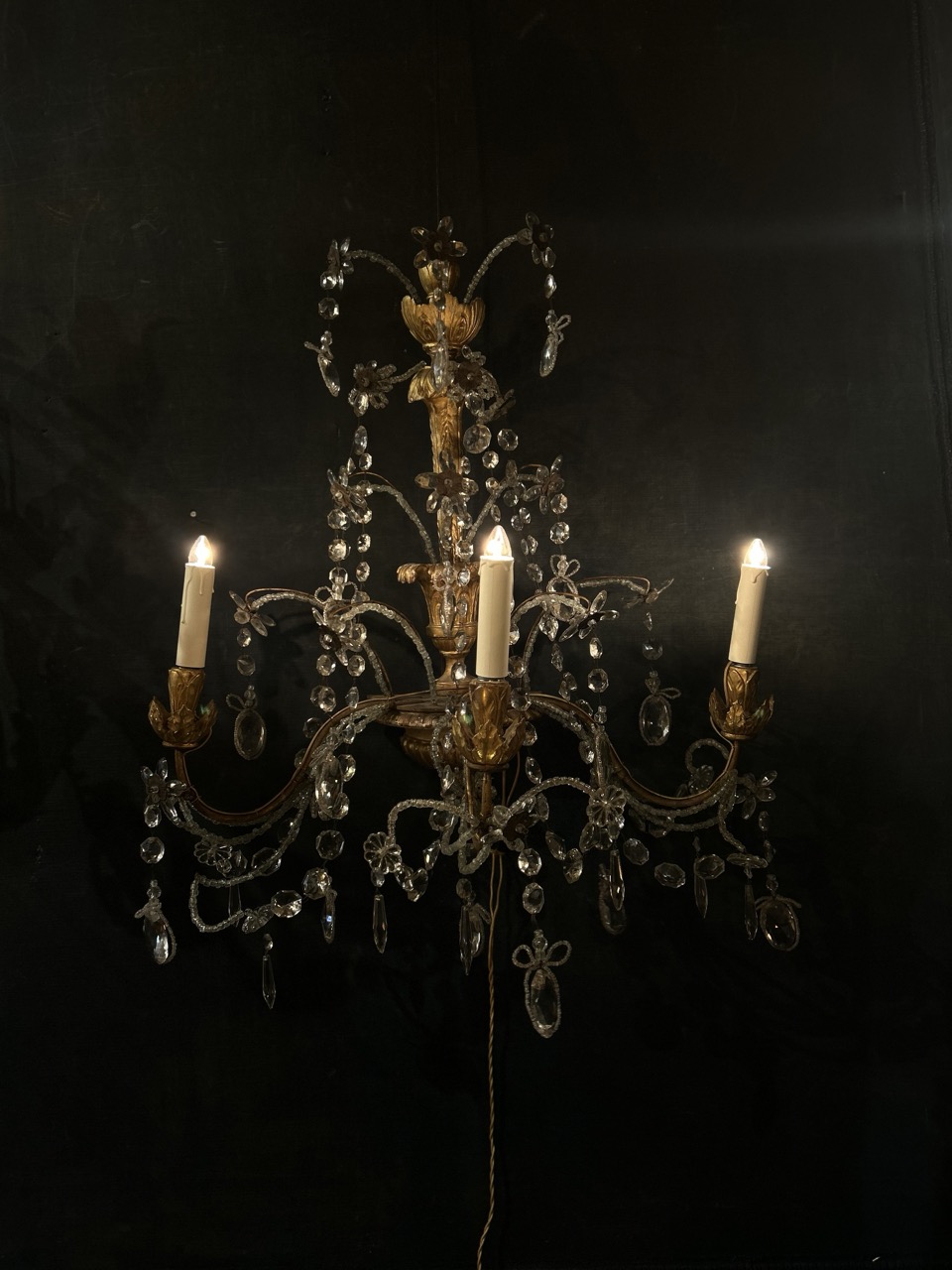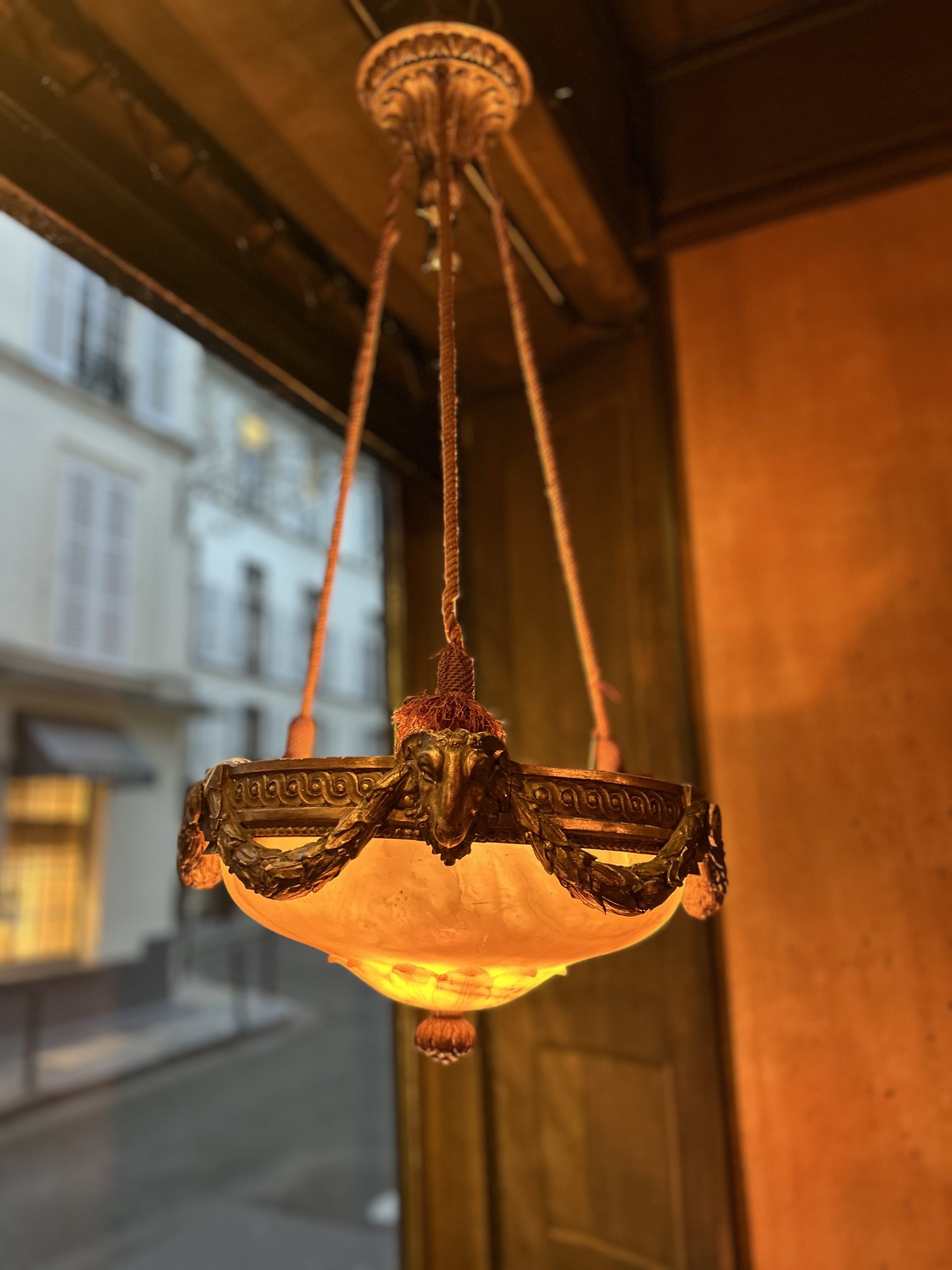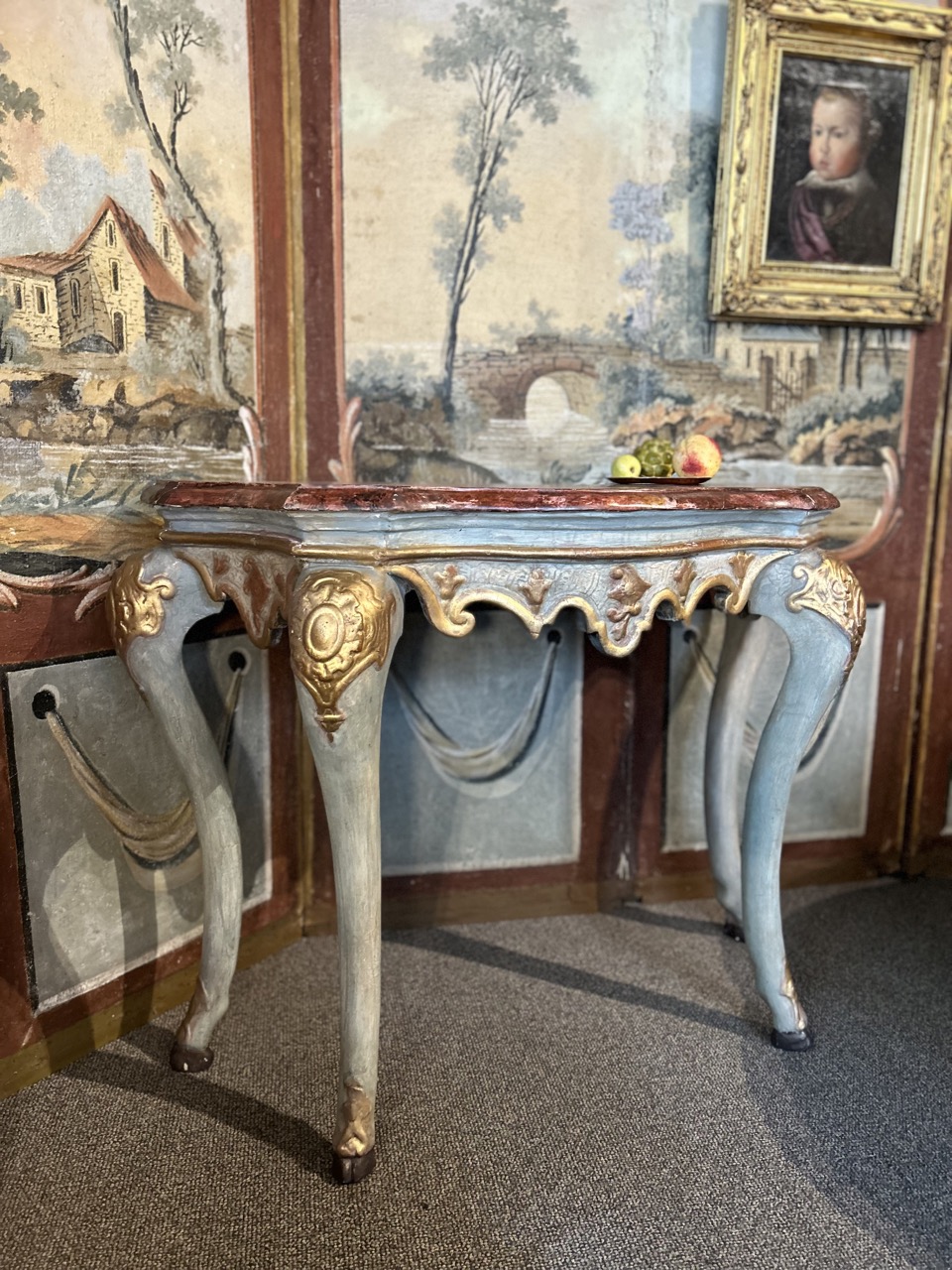Carved walnut table opening onto a drawer, one-piece walnut top, original wrought iron lock and handle, beautiful patina.
Late 17th century,
Spain
Oil on canvas “Family portrait”, painted wooden cardre.
The dark clothes of the woman and children, although enhanced with white lace collar and shirt, refer to the recent mourning probably of the wife’s husband.
XIX century,
English school
Wooden armor holder, used to present both all pieces of armor: helmet, gambison, chain mail.
19th century
Church chandelier with 8 arms of light, central shaft in carved and gilded wood, cut glass beads, cast iron dormers and colored glasses
19th century
Genova, Italy
Painted apple grey wooden rocking horse, original mane, sulphide eyes, original tacks, “Rambler Liverpool” label.
Liverpool, England
late 19th century.
Large Genoese chandelier from the 19th century, central shaft in gilded wood, garlands of transparent glass tassels, drops in colored glass.
Genova, Italy
19th century
Charming lantern in patinated sheet metal cut into a hexagonal shape with sun, foliage and arabesque motifs, original old glass panes, original patina.
Venice, Italy
18th century
Pair of sconces with 3 arms of light, central barrel in carved gilded wood, garlands of cut glass beads.
Electrification to the standards.
19th century
Genoa, Italy
Large Napoleon III alabaster pendant light.
Antique, large flat alabaster bowl, with a gilded wooden frame nicely molded with classical motifs, attached by 3 rams’ heads
Some small wear.
Sinuous console on three sides, the top is red lacquered, the belt is in an eventful shape with heightening and cut out with gold festoons, 4 arched feet

